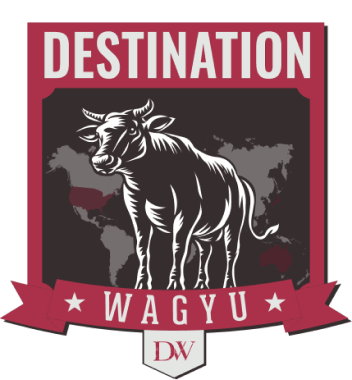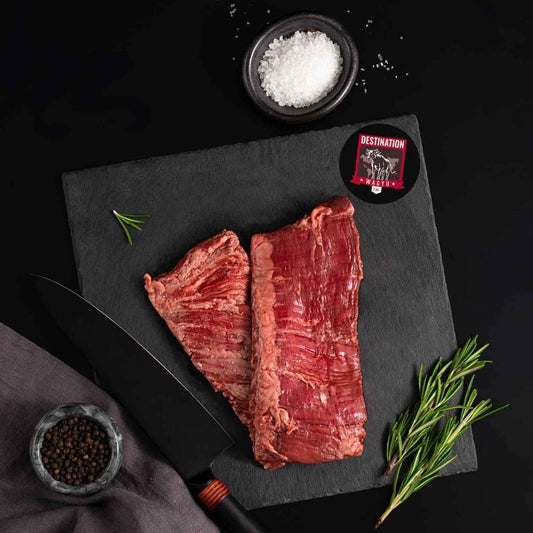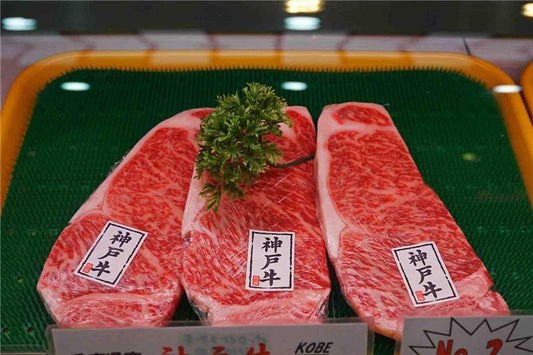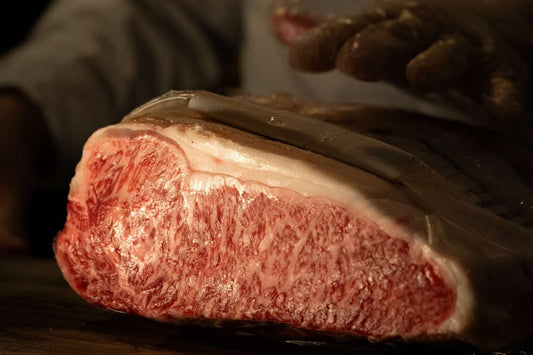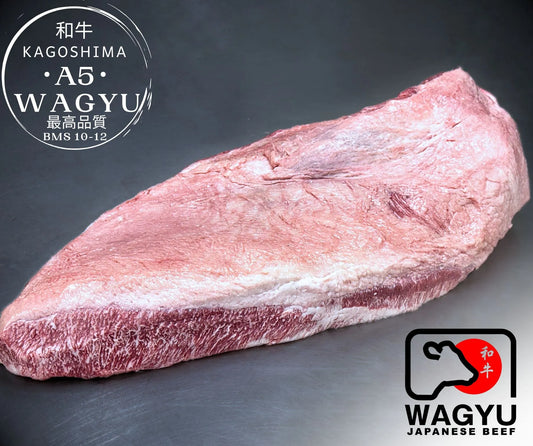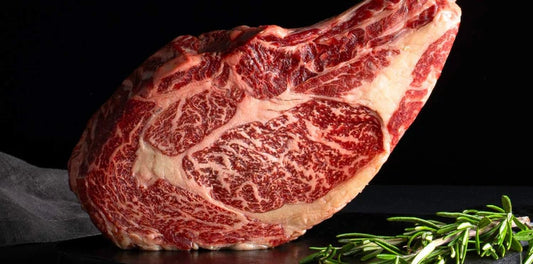-
A5 Miyazaki Wagyu is produced from Kuroge Washu cattle with genetics selected for superior marbling and oleic acid content
-
The Japanese Meat Grading Association awards A5 only to carcasses with top scores in marbling, texture, color, and fat quality
-
Miyazaki Wagyu consistently wins Japan's Wagyu Olympics due to its breeding precision, feeding protocols, and quality control systems
As someone who has spent a significant portion of my career working within the fine meat industry and engaging with breeders, butchers, and chefs globally, I can confidently say that few beef varieties command the reverence and technical admiration that A5 Miyazaki Wagyu does. This isn’t just a product of refined taste or branding, but a culmination of generational breeding, scientific rigor, environmental symbiosis, and cultural stewardship.
In this article, I aim to provide a deep and detailed examination of Miyazaki Wagyu, particularly the A5-graded examples that have taken center stage in the global premium beef market. This isn’t an introduction to Wagyu. This is an expert-level dissection for those who work in fine dining, procurement, livestock breeding, meat science, and import-export regulation. The nuances we will examine go beyond marbling and melt-in-the-mouth texture; we will look into genetics, agricultural engineering, carcass grading, and international positioning. This is the blueprint behind Japan’s most awarded beef.

Historical Context and Regional Significance
Origins of Wagyu Cattle in Japan
The Wagyu breeds trace their genetic roots back over a millennium. Though cattle were introduced to Japan through the Korean peninsula around the second century AD, their use was primarily for draught and agricultural labor, not consumption. The genetics of modern Japanese Black cattle, particularly the Kuroge Washu line dominant in Miyazaki, were shaped during the Edo period, when Japan’s isolationist policies prevented crossbreeding with Western stock. This isolation allowed for an intensely focused breeding effort that prioritized work endurance, inadvertently selecting for intramuscular fat stores, which now manifest as exquisite marbling.
Following the Meiji Restoration in the 19th century, Western influences entered Japan, leading to a brief and controlled period of crossbreeding. However, by the early 20th century, the Japanese government closed off genetic introductions and classified four native breeds, among which Japanese Black became the most prominent for beef production. Kuroge Washu, in particular, was found to produce the highest levels of finely textured intramuscular fat.
The Rise of Miyazaki’s Beef Industry
The Miyazaki Prefecture, located on the southeastern coast of Kyushu Island, was not always Japan’s beef capital. Historically, it had been overshadowed by the more storied Kobe and Matsusaka regions. However, through deliberate governmental and cooperative initiatives starting in the late 20th century, Miyazaki began to redefine what it meant to produce elite Wagyu.
Key to this transformation was the establishment of JA Miyazaki (Japan Agricultural Cooperative), which instituted rigorous breeding, tracking, and grading systems. The prefecture's commitment to quality over volume allowed it to produce Wagyu that consistently outperformed others in national competitions. In 2007, 2012, and 2017, Miyazaki Wagyu claimed the top prize at the prestigious Zenkoku Wagyu Noryoku Kyoshin-kai, colloquially known as the "Wagyu Olympics."
Breed Lineage and Genetic Integrity
Focus on the Kuroge Washu Line
The cornerstone of Miyazaki Wagyu’s reputation is the genetic integrity of its cattle. Breeders in the region work exclusively with Kuroge Washu, one of the four recognized Wagyu breeds. Within Kuroge Washu, certain strain lines like Tajiri, Kedaka, and Fujiyoshi are selectively propagated based on traits such as marbling propensity, meat color, and skeletal development. These strains are not blended indiscriminately. Instead, breeders maintain detailed lineage records, selecting bulls and cows with known genetic profiles to maximize both yield and quality.
Selection Based on Marbling-Linked Genotypes
Advanced genetic testing now allows breeders to select animals based on polymorphisms that correlate with high BMS (Beef Marbling Scores). Traits such as the presence of the DGAT1 gene, which influences fat deposition, and SNPs that regulate intramuscular lipid metabolism, are frequently screened. This has enabled more predictive breeding strategies, where phenotype follows genotype with greater consistency.
Reproductive Technologies and Biosecurity
Miyazaki operations make extensive use of artificial insemination and embryo transfer to control lineage and scale high-quality genotypes without compromising animal health. These procedures are carried out under strict biosecurity measures, and embryos are often graded by quality before implantation. The combination of reproductive precision and genetic data has given Miyazaki breeders an unparalleled level of control over beef quality outcomes.
Terroir: Environmental and Agricultural Ecosystem of Miyazaki
Climate and Geography
Miyazaki’s location offers a subtropical climate with high humidity, moderate temperatures, and ample rainfall. This results in lush pastures and forage crops, which provide a foundational layer of nutrition before cattle are transitioned to grain-based feedlots. The temperate winters prevent thermal stress, supporting optimal growth rates and reducing metabolic strain during finishing.
Soil and Water Quality
The mineral profile of Miyazaki’s volcanic soils plays a significant role in the region’s ability to grow nutrient-rich feed crops. Additionally, the groundwater used for cattle hydration is low in contaminants and rich in beneficial minerals. This impacts both the flavor profile and physiological development of the cattle, supporting muscle tone and fat dispersion.
Integration with Local Agriculture
An underappreciated aspect of Miyazaki’s system is its sustainability through integration. Many feed inputs are byproducts of other local industries, such as rice bran from rice polishing and distillers’ grains from shochu production. This closed-loop approach not only minimizes waste but also enhances the regional flavor terroir embedded in the final product.
The Japanese Grading System and A5 Prestige
Dissecting the Grading Matrix
The Japanese Meat Grading Association (JMGA) uses a comprehensive system that evaluates both yield and quality. The yield grade (A, B, or C) refers to the cutability or amount of meat obtained from a carcass. The quality grade (1 to 5) evaluates four attributes:
-
BMS (Beef Marbling Standard)
-
Meat color and brightness
-
Firmness and texture of the meat
-
Color, luster, and quality of fat
Only carcasses that receive the highest marks across all categories can achieve the A5 designation.
Beef Marbling Standard and Chemistry
BMS is measured on a 12-point scale using visual charts that compare rib-eye cross-sections. Miyazaki Wagyu frequently scores between 10 and 12, which places it at the upper echelon of marbling intensity. This is not merely aesthetic. The marbling in Wagyu is composed primarily of monounsaturated fats, particularly oleic acid. These fats contribute to the lower melting point, around 25°C, which gives the meat its signature melt-in-the-mouth texture.
This lipid composition also influences flavor volatility, allowing more aroma compounds to be released at lower temperatures, which enhances the sensory experience significantly when compared to beef with higher saturated fat content.
Cattle Husbandry and Welfare
Lifecycle Management
Cattle intended for A5 Miyazaki Wagyu undergo a tightly controlled life cycle, beginning with calving in small, supervised farms. Weaning occurs between 8 and 10 weeks, after which calves are transitioned to specialized backgrounding farms. Finishing takes place in feedlots where animals are monitored daily, and weight gain is controlled to ensure muscle development and fat integration remain in balance.
These cattle are typically raised for over 900 days, nearly three times longer than commercial beef cattle in the United States. The extended rearing period allows for slow, even marbling development and reduces the metabolic stress often associated with accelerated weight gain programs.
Nutritional Engineering
The feeding program is a three-phase system: starter, grower, and finisher. In the final phase, cattle are fed rations of steamed corn, rice straw, barley, and soybean meal. Total digestible nutrients (TDN) and net energy for maintenance (NEm) are calibrated using precise feed formulas. Feed is often moistened to improve palatability and reduce dust-related respiratory issues.
Slaughtering, Carcass Management, and Hygiene
Slaughter Protocols and Traceability
All slaughter is conducted at government-inspected facilities with full HACCP compliance. Each animal is individually tagged and tracked through the Japanese cattle registry, which records lineage, farm of origin, and feed program history. These details are often accessible to end consumers via QR codes.
Carcass Processing and Temperature Management
After slaughter, carcasses are split and chilled in temperature-controlled environments. The speed and consistency of chilling are crucial to preventing cold shortening and reducing drip loss. Miyazaki operations use blast chilling combined with slow chilling zones to gradually bring down core temperature while preserving muscle structure.
Butchery and Culinary Preparation
Japanese Butchery Methodology
Japanese butchers practice seam-cutting, where each muscle group is separated along natural fascia lines. This contrasts with Western butchery, which often removes entire primal cuts without such nuance. This allows chefs to work with cuts like:
-
Zabuton (chuck flap tail)
-
Sankaku (triangular shoulder)
-
Ichibo (top sirloin cap)
-
Misuji (top blade)
Each of these cuts has unique texture, fat dispersion, and cooking applications.
Aging Practices
Although dry aging is rare due to high fat content, some elite processors experiment with short dry-aging periods of 14 to 21 days. More commonly, Miyazaki Wagyu is wet-aged under vacuum seal to enhance tenderness through enzymatic action while preserving the signature flavor purity.
Culinary Science and Gastronomic Expression
Flavor Chemistry and Fat Composition
One of the most distinguishing features of A5 Miyazaki Wagyu lies in its unique lipid profile. The intramuscular fat is not only visually spectacular but chemically superior in terms of culinary performance. Composed predominantly of monounsaturated fats, especially oleic acid, this fat delivers a buttery texture and complex aromatic release at much lower temperatures than typical beef.
The oleic acid concentration in Miyazaki Wagyu can exceed 50 percent, which plays a central role in the beef's perceived sweetness and lack of greasiness. This is in contrast to beef from other breeds where saturated fats dominate, often leading to heavier mouthfeel and slower flavor volatility. The low melting point of Miyazaki fat, which can begin melting at just above room temperature, allows volatile compounds to activate quickly upon contact with heat or the tongue.
Flavor development also benefits from the presence of glutamates and inosinates, which are natural umami compounds found in well-marbled muscle. When cooked correctly, these compounds undergo the Maillard reaction and enzymatic browning, creating layered notes of roasted nuts, caramel, and even mild fermentation.
Thermal Sensitivity and Cooking Methodology
From a culinary science perspective, cooking A5 Miyazaki Wagyu requires restraint and precision. The same fat that makes the meat luxurious also renders quickly and is susceptible to burning or separation if the cooking temperature is too high or applied for too long.
For this reason, professional kitchens often use low-intensity, high-control heat sources:
-
Binchotan charcoal is favored for its neutral aroma and high, consistent heat.
-
Cast iron pans provide even surface temperature and excellent caramelization.
-
Sous vide methods are occasionally used but must be tightly controlled to avoid over-softening the fat matrix.
In most cases, a quick sear of 20 to 30 seconds per side is all that is required. Anything beyond that risks liquefying the intramuscular fat and leaving the meat dry, which defeats the purpose of premium-grade Wagyu.
Preparation Styles and Regional Preferences
Miyazaki Wagyu features prominently in traditional Japanese cooking, where subtlety and balance are critical. Classic applications include:
-
Sukiyaki, where thin slices are simmered briefly in a sweet soy broth.
-
Shabu-shabu, where beef is swirled in near-boiling water and dipped in citrus-based ponzu or sesame sauces.
-
Yakiniku, where cuts are grilled tableside and eaten with rice or daikon condiments.
In Western kitchens, chefs have adapted Miyazaki Wagyu into tasting menus, using it as a final protein to conclude the savory courses. Care must be taken to pair it with complementary ingredients. Acidic garnishes, mineral-driven wines, or simple rock salt often outperform richer sauces or buttery sides, which can overwhelm the inherent complexity of the meat.

Miyazaki Wagyu in Competitive and Global Context
Dominance in the Wagyu Olympics
Every five years, Japan hosts the Zenkoku Wagyu Noryoku Kyoshin-kai, more informally known as the Wagyu Olympics. This national competition evaluates beef quality and breeding techniques from all major producing prefectures. Miyazaki has consistently dominated in multiple categories, particularly in carcass quality and breed advancement.
Winning at the Wagyu Olympics is not simply a matter of having a high BMS score. Judges also evaluate muscle distribution, fat quality, carcass size, and even the consistency of marbling patterns across multiple animals from the same breeder. Miyazaki’s dominance reflects not just superior cattle but a system-level excellence encompassing genetics, nutrition, welfare, and processing.
International Expansion and Regulatory Navigation
Miyazaki Wagyu began entering global markets in the early 2000s, with exports to the United States, Singapore, Taiwan, and more recently, the Middle East. Unlike generic "Japanese Wagyu" exports, Miyazaki maintains branded control through government and cooperative regulation.
Each shipment is accompanied by documentation confirming breed lineage, origin, slaughterhouse compliance, and health clearance. In markets like the US, it must also meet USDA import standards, which include inspections for specific pathogens, processing temperatures, and packaging requirements.
Some key challenges faced during international expansion include:
-
Maintaining cold-chain logistics across long distances.
-
Educating chefs and retailers on correct handling and portioning.
-
Addressing counterfeit labeling in regions where "Wagyu" is not a protected term.
The Miyazaki brand has fought these battles by implementing scannable QR codes, packaging in tamper-proof cartons, and developing direct relationships with distributors rather than relying on third-party handlers.
Authentication and Anti-Counterfeit Measures
Miyazaki Wagyu is traceable down to the individual animal level. Each cow has a unique 10-digit identification number recorded in the national cattle database. This number links to a profile containing the animal's birth farm, parentage, feed regimen, medical history, and slaughter date.
In high-risk export markets, producers also utilize:
-
Nose print identification, which functions like a biometric passport.
-
RFID tags attached at birth and removed only post-harvest.
-
Blockchain-backed documentation for high-value shipments to top-tier clients.
These protocols are not mere marketing strategies. They are essential in preserving the integrity of a supply chain that is frequently targeted by counterfeiters due to the high market value of A5 Wagyu.
Economic, Industrial, and Supply Chain Considerations
Industry Architecture in Miyazaki
The economic structure of Miyazaki’s beef sector is centered around cooperatives under the JA (Japan Agricultural) group umbrella. This cooperative framework allows small-scale farmers to benefit from centralized breeding programs, feed purchasing power, and shared slaughterhouse access.
It is not uncommon for one breeder to own fewer than 20 head of cattle, while participating in a nationwide program that ensures their output meets the highest grading standards. This distributed model protects against systemic risk and enables quality control at a granular level.
Domestic Market Prioritization
Despite its international acclaim, Miyazaki Wagyu is still primarily consumed within Japan. The domestic market remains incredibly discerning, with department stores, ryotei (high-end traditional restaurants), and Michelin-starred venues competing for small volumes of elite beef. This domestic pressure keeps global supply limited and pricing high.
Even within Japan, the Miyazaki brand is marketed as a distinct product separate from generic Wagyu. Restaurants that serve Miyazaki beef often display the certificate of authenticity prominently, sometimes including the cow's name and lineage.
Logistics and Cold Chain
Exporting Miyazaki Wagyu requires meticulous control over refrigeration and transport conditions. Ideal temperature range during shipping is between -1°C and 1°C. Any deviation can compromise the fat matrix or lead to bacterial growth.
Packaging typically involves:
-
Vacuum-sealing individual cuts.
-
Insulating with thermal foam liners.
-
Including temperature loggers in shipping cartons.
-
Using expedited cargo or dedicated reefer containers for bulk orders.
For buyers, receiving Miyazaki Wagyu is not a standard procurement process. It involves documentation review, rapid unloading and inspection, and, in some cases, immediate repackaging for end-client presentation.
Sustainability and Technological Evolution
Feed Efficiency and Carbon Reduction
Raising Miyazaki Wagyu is undeniably resource-intensive. The long feed cycles and high-calorie diets increase the carbon footprint per kilogram of meat. However, breeders are actively exploring ways to improve feed conversion ratios (FCR) without sacrificing marbling quality.
Some initiatives include:
-
Utilizing feed additives that reduce methane production.
-
Introducing rotational grazing on satellite farms during early growth stages.
-
Incorporating carbon credits into regional agricultural planning.
Studies are underway to develop breed-specific feed algorithms that align nutritional profiles with genetic potential, which may yield both environmental and economic efficiency gains.
Genomic and Digital Enhancements
The adoption of genomics in breeding decisions is no longer experimental. DNA markers tied to BMS, disease resistance, and temperament are now routine elements in sire selection. Sophisticated software platforms help cooperatives match breeding pairs not just for fat quality but for yield, muscle symmetry, and long-term genetic diversity.
Machine vision is also being tested for carcass grading. Cameras capture cross-sections at slaughter, and software algorithms compare marbling patterns to calibrated BMS images. These tools provide more objective grading and allow data to be fed back into breeding programs.
Comparative Analysis with Other Premium Wagyu
Kobe vs. Miyazaki
Kobe beef benefits from strong brand recognition but is produced under tighter geographical and headcount constraints. While Kobe beef must originate from Hyogo Prefecture and be from the Tajima strain, Miyazaki beef allows for a broader genetic base and has demonstrated more consistent performance at the national level.
Taste profiles also differ. Kobe beef is often slightly leaner with a firmer bite, whereas Miyazaki is known for its creamier fat and softer texture.
Matsusaka and Omi Comparisons
Matsusaka Wagyu is famous for its female-only policy and often higher fat content. However, it does not achieve the same consistency in BMS and yield as Miyazaki. Omi, Japan’s oldest beef brand, prioritizes heritage over innovation, which has kept it more traditional but less globally available.
In blind tastings, trained panels often rank Miyazaki Wagyu higher in sweetness, finish, and overall balance. This consistency, backed by data and not just narrative, is what solidifies Miyazaki’s dominance in professional circles.
Future Outlook and Strategic Challenges
Scaling Responsibly
As demand for Miyazaki Wagyu increases globally, the biggest risk is overextension. Scaling up production without compromising quality requires investments in labor training, feed sourcing, and disease control. There is also a generational challenge, as fewer young Japanese are entering agricultural professions.
Efforts are being made to:
-
Automate low-skill but high-repetition tasks on farms.
-
Digitize training for new breeders and feeders.
Encourage urban-to-rural relocation through government incentives.
Climate Resilience
With shifting climate patterns, especially in southern Japan, cattle are facing new stressors. Heatwaves, forage crop failures, and water shortages have already started impacting breeder operations.
Adaptations are being explored such as:
-
Installing misting and evaporative cooling systems in barns.
-
Developing heat-tolerant forage strains.
-
Exploring feed formulations that reduce heat-induced acidosis.
Final Thoughts
Engaging with A5 Miyazaki Wagyu at a professional level requires far more than an appreciation for its marbling or a passing familiarity with Japanese beef. It demands a comprehensive understanding of the entire ecosystem that brings this product to life. From the genomic precision applied in breeding decisions to the formulation of regionally sourced feed, every detail is engineered to deliver one of the most refined beef experiences in the world. But beyond the technicalities, what truly sets A5 Miyazaki Wagyu apart is the harmony between tradition and innovation that permeates every stage of its production.
For chefs, this beef offers not only a luxurious ingredient but a narrative that can be shared with diners, one rooted in heritage, science, and craftsmanship. For breeders, it is the result of meticulous lineage management and a dedication to husbandry practices that prioritize both welfare and performance. For importers and distributors, it represents the pinnacle of Japanese agricultural excellence and a benchmark against which all other premium beef is measured.
The global food industry has no shortage of premium products, but few carry the same weight of integrity as A5 Miyazaki Wagyu. It is not simply an indulgence for the elite. It is a cultural export that tells the story of Japan’s commitment to quality, resilience, and precision. As professionals in the meat and fine dining industries, we must recognize that every cut of A5 Miyazaki Wagyu we handle is the culmination of thousands of decisions made by skilled individuals who have dedicated their lives to perfecting it.
Looking forward, the challenge lies not in increasing the prestige of A5 Miyazaki Wagyu, it already holds a revered position but in preserving its authenticity in the face of rising global demand. The path ahead will require innovation in sustainability, investment in the next generation of breeders, and vigilance against dilution of standards. If we rise to that challenge, A5 Miyazaki Wagyu will not only retain its crown as Japan’s most awarded beef, but it will also serve as a model for what the future of responsible, luxury agriculture can look like.
Let us continue to elevate this extraordinary product, not merely by promoting it, but by understanding it in full and honoring the legacy it carries.

About Destination Wagyu
At Destination Wagyu, A5 Miyazaki Wagyu is more than a product on our shelves. It represents the heart of what we do and the standard we hold ourselves to. As a premium e-commerce brand, we proudly source directly from top-tier Japanese producers, including Miyazaki, ensuring that our customers receive the same award-winning beef featured in this article. We understand that our clientele are not just seeking premium meat; they are pursuing an exceptional culinary experience rooted in authenticity, heritage, and precision.
Our partnerships with respected names such as Miyazaki, Kobe Wine, Kagoshima, and Stone Axe reflect our commitment to excellence. Whether you are looking for a richly marbled ribeye, an elegant gift box for a connoisseur, or a recurring subscription curated for your preferences, we provide Wagyu that meets the highest possible standards in tenderness, flavor, and origin transparency.
If the insights in this article resonate with your appreciation for detail and distinction, we invite you to explore our collection. Experience firsthand why A5 Miyazaki Wagyu is celebrated by chefs and beef experts around the world.
Visit our website and elevate your table with beef that reflects your great taste.
